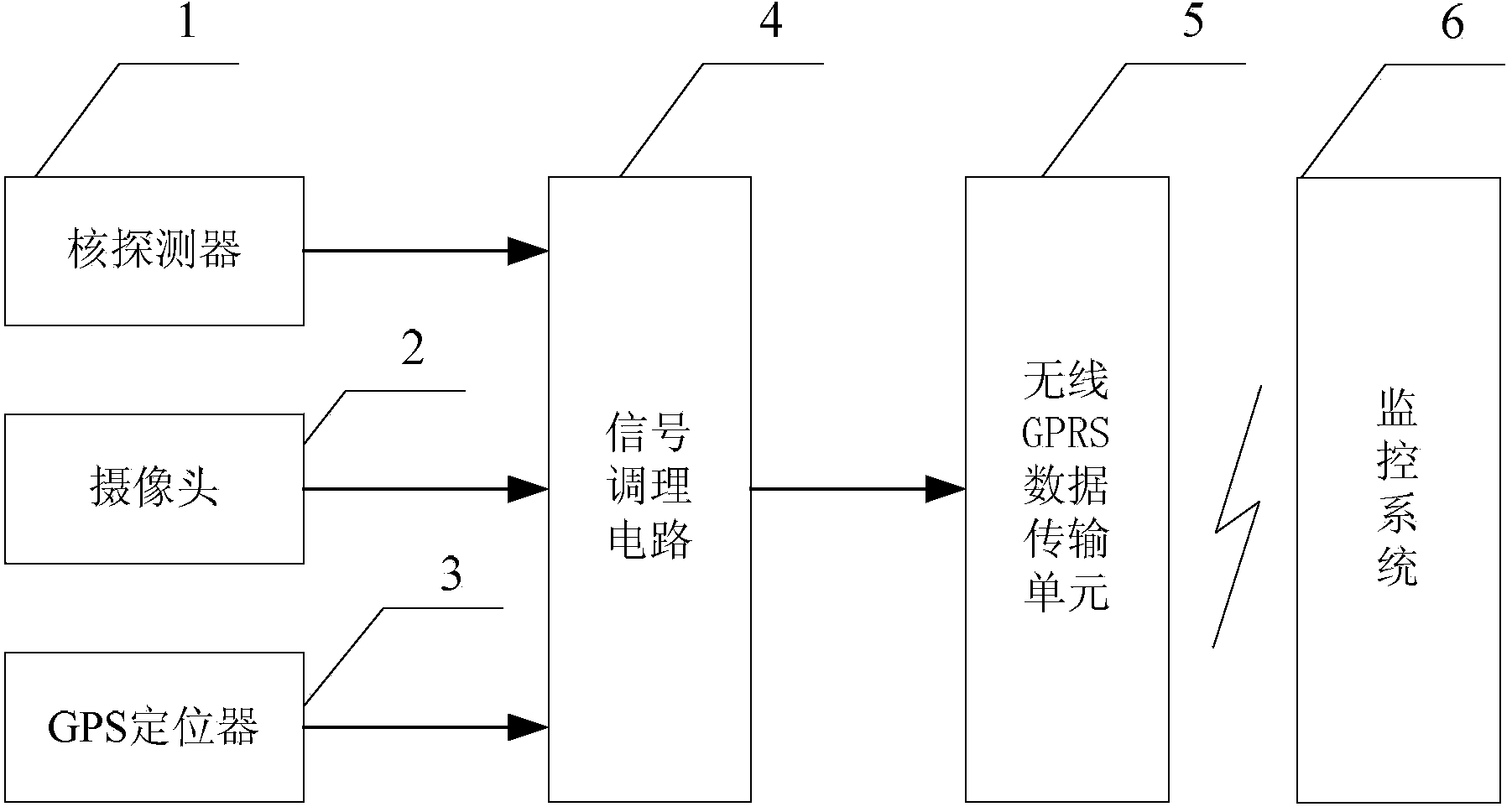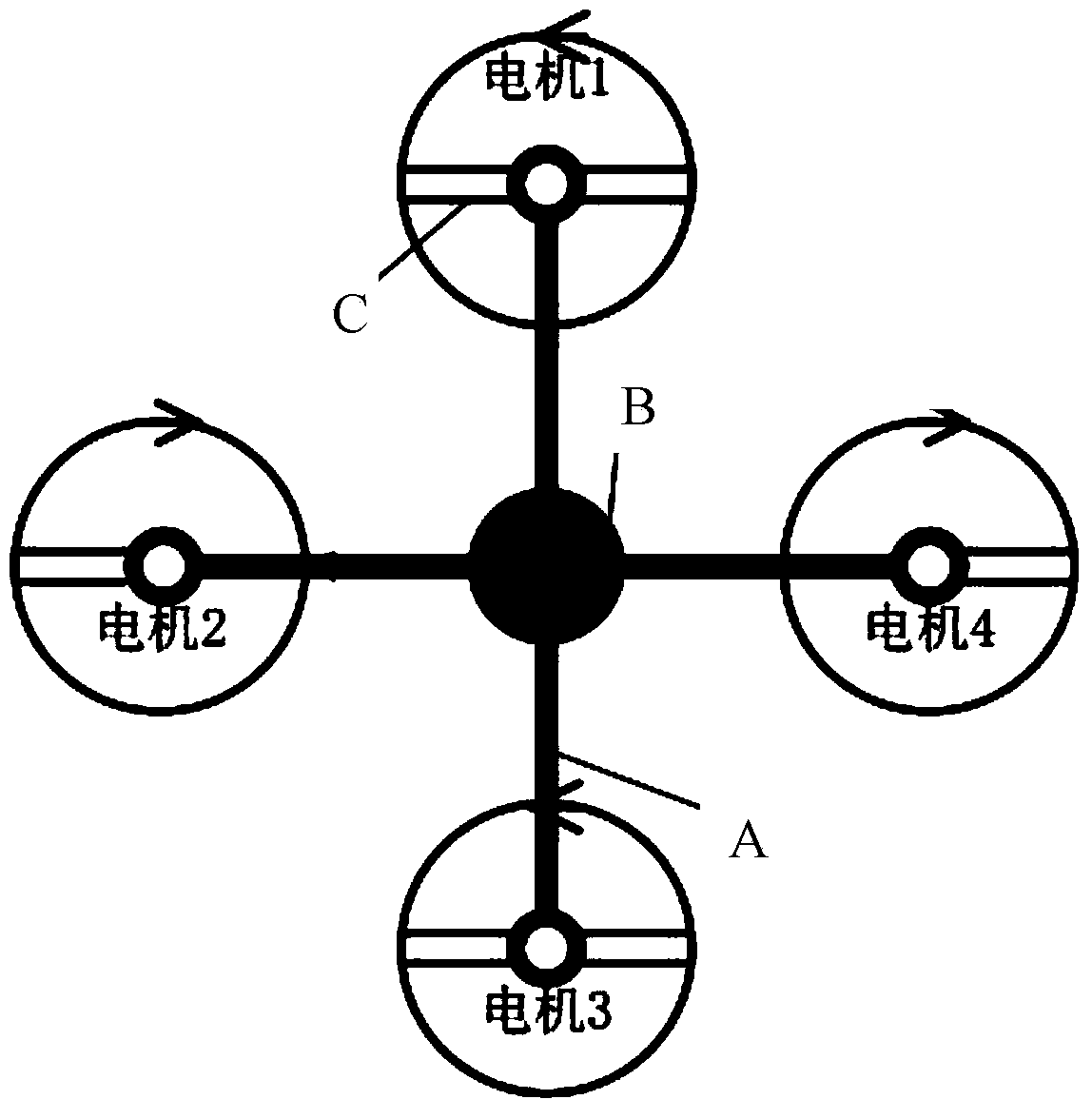Radiation detection aircraft
A technology for nuclear detectors and aircraft, applied in the field of nuclear radiation detection, can solve problems such as poor emergency handling capabilities of robots, and achieve the effect of improving emergency handling capabilities
- Summary
- Abstract
- Description
- Claims
- Application Information
AI Technical Summary
Problems solved by technology
Method used
Image
Examples
specific Embodiment approach 1
[0016] Specific implementation mode one: the following combination figure 1 Illustrate the present embodiment, the nuclear radiation detection aircraft described in the present embodiment, it comprises quadrotor aircraft carrier, it also comprises nuclear detector 1, camera 2, GPS locator 3, signal conditioning circuit 4 and wireless GPRS data transmission unit 5,
[0017] The camera 2 is arranged on the flight front-end housing of the quadrotor aircraft carrier, the nuclear detector 1 is mounted on the lower end of the housing of the quadrotor aircraft carrier, and the GPS locator 3 is used to realize the positioning of the flight position of the quadrotor aircraft carrier,
[0018] The detection signal output end of the nuclear detector 1 is connected to the detection signal input end of the signal conditioning circuit 4, the imaging signal output end of the camera 2 is connected to the imaging signal input end of the signal conditioning circuit 4, and the positioning signal ...
specific Embodiment approach 2
[0019] Embodiment 2: This embodiment further explains Embodiment 1. The Geiger counter tube of the nuclear detector 1 described in this embodiment is powered by a high-voltage module, and the high-voltage module is covered with a lightweight metal mesh.
[0020] Since the high-voltage module will form a strong electromagnetic field around it, which will affect the radio signal, in order to solve the interference of the high-voltage module on the radio signal, it is necessary to shield the electromagnetic field formed when the high-voltage module is working to prevent it from affecting the wireless control signal. interference, affecting the flight control of the detection device. At the same time, keep the high-voltage module and the communication module as far away as possible.
specific Embodiment approach 3
[0021] Specific implementation mode three: the following combination figure 1 Describe this embodiment, this embodiment will further explain Embodiment 1 or 2, this embodiment also includes a monitoring system 6, the wireless GPRS receiving unit of the monitoring system 6 and the wireless GPRS data transmission unit 5 transmit signals by wireless.
[0022] The monitoring system 6 can be used to monitor the positioning and tracking of the nuclear radiation detection aircraft, and analyze the radiation distribution in the area where it is located. The monitoring system 6 and the wireless GPRS data transmission unit 5 can perform two-way communication, and the detected dose data can be sent to the monitoring system 6 of the emergency command center through wireless transmission, and the monitoring system 6 can also send control instructions to the nuclear detection system through a wireless network. Device 1.
[0023] When more functional modules are added, the load on the radia...
PUM
 Login to View More
Login to View More Abstract
Description
Claims
Application Information
 Login to View More
Login to View More - R&D
- Intellectual Property
- Life Sciences
- Materials
- Tech Scout
- Unparalleled Data Quality
- Higher Quality Content
- 60% Fewer Hallucinations
Browse by: Latest US Patents, China's latest patents, Technical Efficacy Thesaurus, Application Domain, Technology Topic, Popular Technical Reports.
© 2025 PatSnap. All rights reserved.Legal|Privacy policy|Modern Slavery Act Transparency Statement|Sitemap|About US| Contact US: help@patsnap.com



